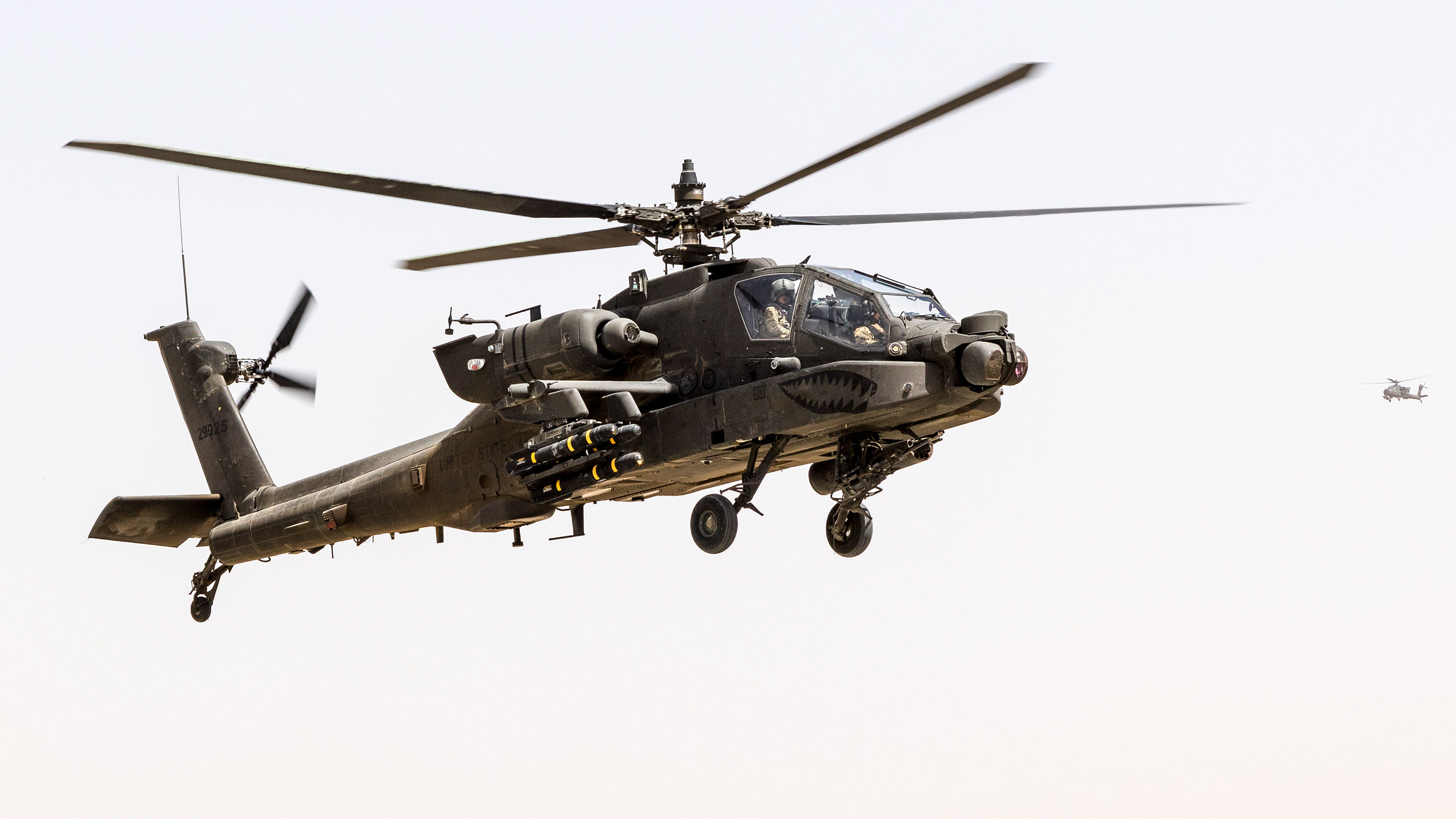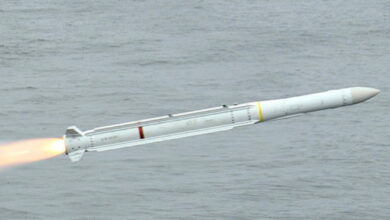US approves $4 billion sale of 36 AH-64E Apache helicopters to Morocco
$4.25 billion sale includes over 700 AGM-114R Hellfire and AIM-92H Stinger missiles and over 500 APKWS kits
The U.S. Department of State has approved a possible sale of AH-64E Apache attack helicopters and related equipment, including advanced Hellfire and Stinger missiles, to the government of Morocco, the Defense Security Cooperation Agency said.
The $4.25 billion sale of 36 Apache helicopters would also include 551 new and optional AGM-114R Hellfire missiles and 200 AIM-92H Stinger missiles, as well as 558 Advanced Precision Kill Weapon System (APKWS) kits, and myriad related equipment, support, training, and logistics, the Wednesday, November 20 DSCA release said.
“This proposed sale will support the foreign policy and national security of the United States by helping to improve the security of a major Non-NATO ally that is an important force for political stability and economic progress in North Africa,” DSCA said.
The prime contractors would be Boeing Company and Lockheed Martin.
AH-64E Apache
Boeing describes the AH-64 Apache as “the world’s most advanced multi-role combat helicopter.”
It has a wingspan of 17.15 feet (5.2m) and can climb at more than 2,000 feet per minute. It features laser, infrared and other systems to locate, track and attack targets. It is capable of classifying up to 128 targets in less than a minute.
The Apache can carry a range of weapons including a 30mm automatic cannon, precision Hellfire missiles and 70mm rockets.
The AH-64E variant was designated the Guardian and features an upgraded Longbow fire control radar, more powerful engines, and advanced avionics and night-vision capabilities.
The first Guardians were delivered in 2011 and full-rate production began in 2012.
Its precedessor, the AH-64D Apache Longbow, was in service with the U.S. Army and other defense forces since the 1990s.
Hellfire and Stinger missiles
The AGM-114 Hellfire is a 100-lb-class missile that can used against armored targets, vehicles, urban structures, boats and personnel. Although originally designed for helicopters, the missile can now be launched from air, sea and ground platforms.
It features a three-axis inertial measurement unit that enables the missile to engage targets to the front, side and behind without requiring the launcher to maneuver into position.
Most variants are equipped with semi-active laser seeker, including the AGM-114K high-explosive anti-tank (HEAT), AGM-114M blast fragmentation and AGM-114N metal augmented charge. The AGM-114R “Romeo” carries a K-charge multi-purpose warhead, enabling it to replace other variants in the U.S. inventory.
Raytheon’s AIM-92H Stinger missile is an air-to-air missile variant of the man-portable FIM-92 Stinger missile designed to be fired from UAVs and helicopters, including the AH-64 Apache.
The AIM-92H Stinger is identical to its ground-launched counterpart and the company says it maintains a greater than 90% success in reliability and training tests. A “fire and forget” missile, the Stinger requires no input once fired.
Raytheon says the supersonic Stinger provides an “operational edge” against all classes of helicopters, drones, fixed-wing aircraft and cruise missiles. It is deployed by 19 countries and all the U.S. military services.
Advanced Precision Kill Weapon System
APKWS upgrades 2.75-inch (70 mm) rockets to a semi-active laser guided precision weapon. The system is a design conversion for Hydra 70 unguided rockets turning them into low-yield precision-guided munitions to help avoid collateral damage.
The modular design enables the system to be fitted to existing and new unguided rockets, inserting between the motor and warhead, and has been fired from more than than 20 fixed- and rotary-wing aircraft types, from fast jets to light helicopters.
BAE says APKWS is designed to lock on to both moving and stationary targets from more than 3 km (1.9 miles) away. The system has a minimum range of 1.5 km and a maximum of 5 km.
The system uses advanced seeker optics on four guidance wings that are deployed after firing. This Distributed Aperture Semi-Active Laser Seeker (DASALS) technology allows the four seekers to work together as a single unit.
BAE says the system has achieved a greater than 93% hit rate in combat operations, and cites an 80% hit probability within 2 m of the center of the laser spot per single shot. The company claims the APKWS is the most cost effective laser-guided munition in its class, enabling “a precision-strike capability at a quarter the price of a Brimstone missile.”












